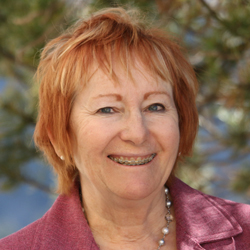
by Ann M. Berghout Austin
20 August 2020
Share this article:
According to writer and activist Srilatha Batliwala, deep structure within an organization refers to “the hidden sites and processes of power and influence, the implicit culture, [and] the informal values and systems of reward and recognition” (p. 43). Decisions are made by “informal groups” and “gossip, back-biting, character assassination, [and] rumors” (p.43) quickly spread within the deep structure, usually serving to discount and disqualify those of whom the deep structure disapproves.
Simply put, the implicit rules for acceptance and success in any organization or social group are encoded in the deep structure governing that group. People in the United States may think of themselves as free-thinking and unbiased, but the deep structure of racism shapes the U.S. national fabric. And, as recent events have reminded us, the deep structure is pervasive, pernicious, vicious, and even deadly. What can the white and cis-straight people of the United States do to address such a horrible legacy? I realize I will never totally understand what others are experiencing and feeling, and I will never be able to talk about any of the issues that divide our country without disclosing my shallowness. Nonetheless, to do nothing is not an option.
I approach this essay as a child developmental psychologist who has been a researcher and teacher for almost 40 years and within those 40 years, an administrator on college and university levels for almost a quarter of a century. I am not a scholar in race relations, diversity, or equity. Rather, my research has focused on child academic well being, girls’ and women’s leadership development and most recently, the setting conditions for leadership development in early childhood.
My thoughts focus on the experiences we can provide for very young white children of privilege that sensitize them to actions they must take, even as young children. For this, I draw on some of the lessons my parents tried to teach me during my preschool and kindergarten years that were designed to help me understand my responsibility, even as a preschooler and kindergartener, to question the deep structure.
People in the United States may think of themselves as free-thinking and unbiased, but the deep structure of racism shapes the U.S. national fabric.
Establishing a Personal Connection. For many of us, the first day of school, especially as a kindergartener, is an exciting, anxious day. My first day of kindergarten coincided with some of the 1954 de-segregation protests in the South. I wish I could remember more about the particulars of that morning, like where the protests took place and who the children were, but still, I will never forget that morning. My mother stood on tiptoes, clutching the top of the refrigerator and staring at the radio. I remember her tears. Finally, she turned away and said, “They made it.” Walking to school, she told me about the children on the radio who were trying to go to school with white children. Living in northern Utah, I had never seen a black person. My mother told me they had darker skin and because of that people didn’t think they should go to school with white children.
This was very puzzling to me. I had never heard of skin-color problems before. So my mother focused on something I knew about, brand-new saddle oxford shoes and white ankle socks. She said she was sure there was a little girl in the group who had new saddle oxfords and socks, just like me and people were throwing things at her and the others trying to make their shoes, socks, and clothes dirty. I could hardly believe what I was hearing! There were adults trying to do this to children? I looked down at my feet. My brand-new saddle oxfords and white socks had been purchased several weeks before and had lived in the shoebox, awaiting the big day. I knew they cost my father, who worked in the mines, a lot of money, and even now I can’t find the words to adequately convey how important I felt because my parents bought them for me. Off and on during that day at school, I stared at my shoes hoping my mother was correct and the little girl’s new shoes remained unspoiled. That evening when the nightly paper came, my mother showed me a photo of the children. Part of the photo showed someone’s shoes and white socks. I remember how relieved I felt. Yup, Mama was right. They still were sparkling clean.
Taking Another’s Perspective. In the larger universe, spoiled saddle oxfords are a very small part of the picture, but to my kindergarten mind, wrapped in its naïve whiteness, they were the most important element. My little-child horror was focused in equal parts on the personal pain if new shoes were ruined and the money it cost to buy such a treasure. Mama had shaped the story around something that made the most impact to a child growing up in a peaceful, white, financially-thin context. New shoes. The story stuck, and because my mother made it so personal in the beginning, it took root in my soul and continued to deepen over the years. As I grew older I thought how terrified and shamed the children must have felt, the gut-wrenching loneliness of being singled out, and the courage to stare straight ahead without crying.
Recognize the Mandate to Ask Questions. Throughout my childhood, my father liked to read The Emperor’s New Clothes by Hans Christian Anderson to us. This tale centers on an emperor whose vanity blinded him to reality. He commissioned a new pair of clothes from two tailors who said they had very special cloth that was invisible to people who were stupid and inadequate for the jobs they held. The tailors labored hard on the remarkable garments, and when their work was finished, they delivered the suit of clothes to the emperor amid great fanfare. Realizing that he couldn’t see his new clothes because he was incompetent, the emperor feigned hearty admiration for the tailors’ work. He quickly dressed and paraded his new clothes for his people. The people had been forewarned about the magic cloth, and fearing to admit they were stupid and unqualified for their jobs, remarked loudly on the beautiful cloth, the vibrant colors, the regal lines. Then a small boy cried out, “he hasn’t any clothes! No shirt, no socks, no shoes, no pants, no robe, nothing!”
My father always ended the book by asking, “Why didn’t the adults have the same courage as the little child?” Even as children we understood the message; Daddy made it clear that his daughters were expected to speak up and ask questions when no one else would. The deep structure must be challenged.
Batliwala tells us that the deep structure erodes only as questions are asked and motives and decisions become transparent. Until then, “. . . only superficial changes will occur” (p. 44). These times speak to each of us who teach, research, study, or “do” leadership. They speak to young parents, grandparents, teachers, caregivers, community organizers, and to anyone who cares about creating a generation of leaders who confront and exorcise the deep structure. I have great faith in today’s youth. I know they can bring about a better world; to help them do this, we need to find ways for them, even as very small children, to find personal connections, develop perspective, and ask hard questions. Over and over and over again.
Reference
Batliwala, S. (2011). Feminist Leadership for Social Transformation: Clearing the Conceptual Cloud. Association for Women’s Rights in Development (AWID), CREA, New Delhi, India.

Ann M. Berghout Austin is Professor at Utah State University, Logan Utah and Founding Director of the Center for Women and Gender. She is the founder and Executive Director of Care About Childcare. She received her Ph.D. in Child Developmental Psychology from Iowa State University in 1981 and has been at Utah State University since ’81. She has an active research program focusing on children’s and women’s leadership development, child care quality and availability, and children’s early mathematics development. Ann has been a member of ILA for many years and a member of WLAG since its inception. With Dr. Lynne Devnew, she co-chaired the WLAG 2019 meeting in 1440, CA. Ann and her research team have presented at every WLAG and ILA global conference for the past six years.

